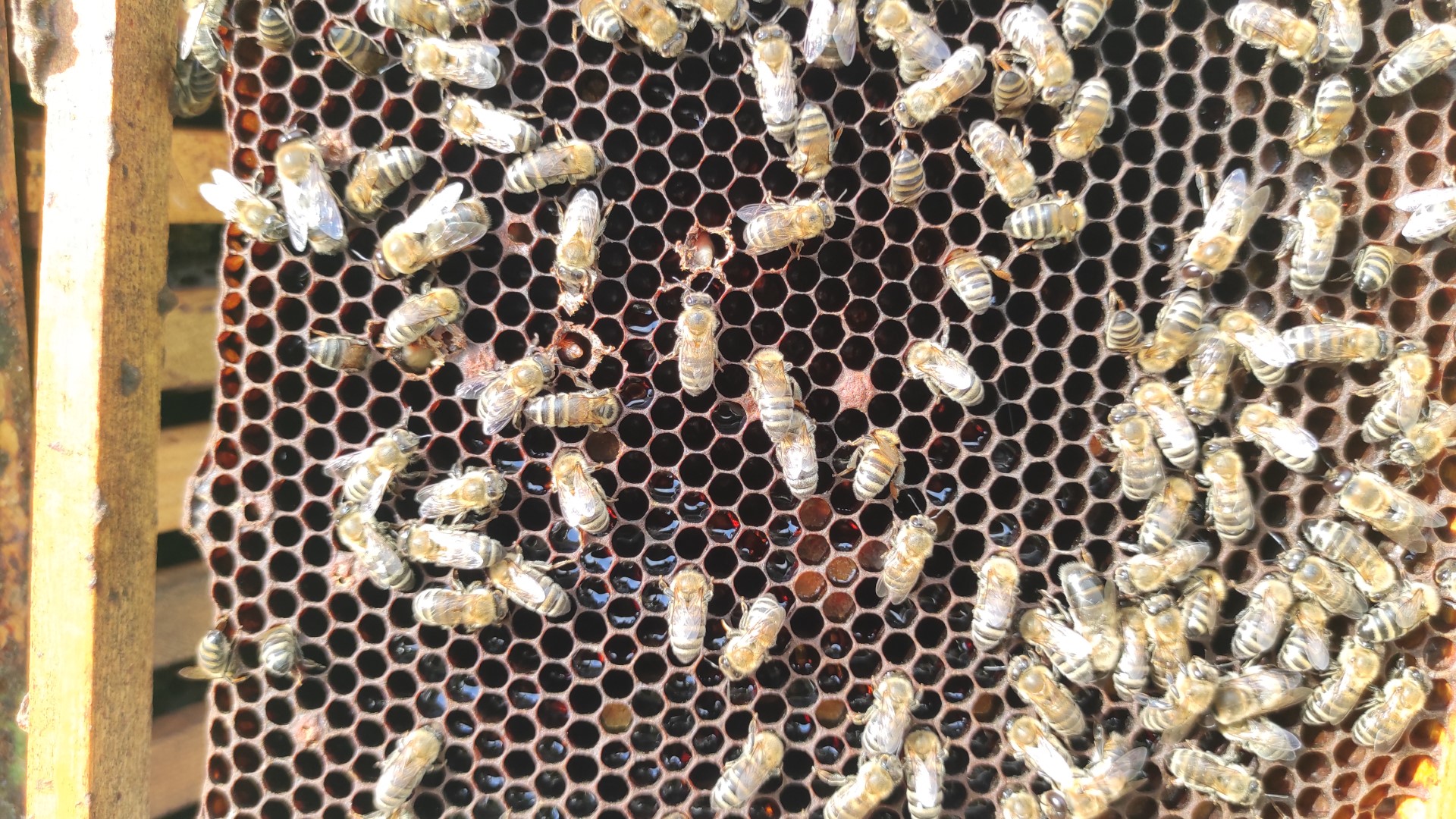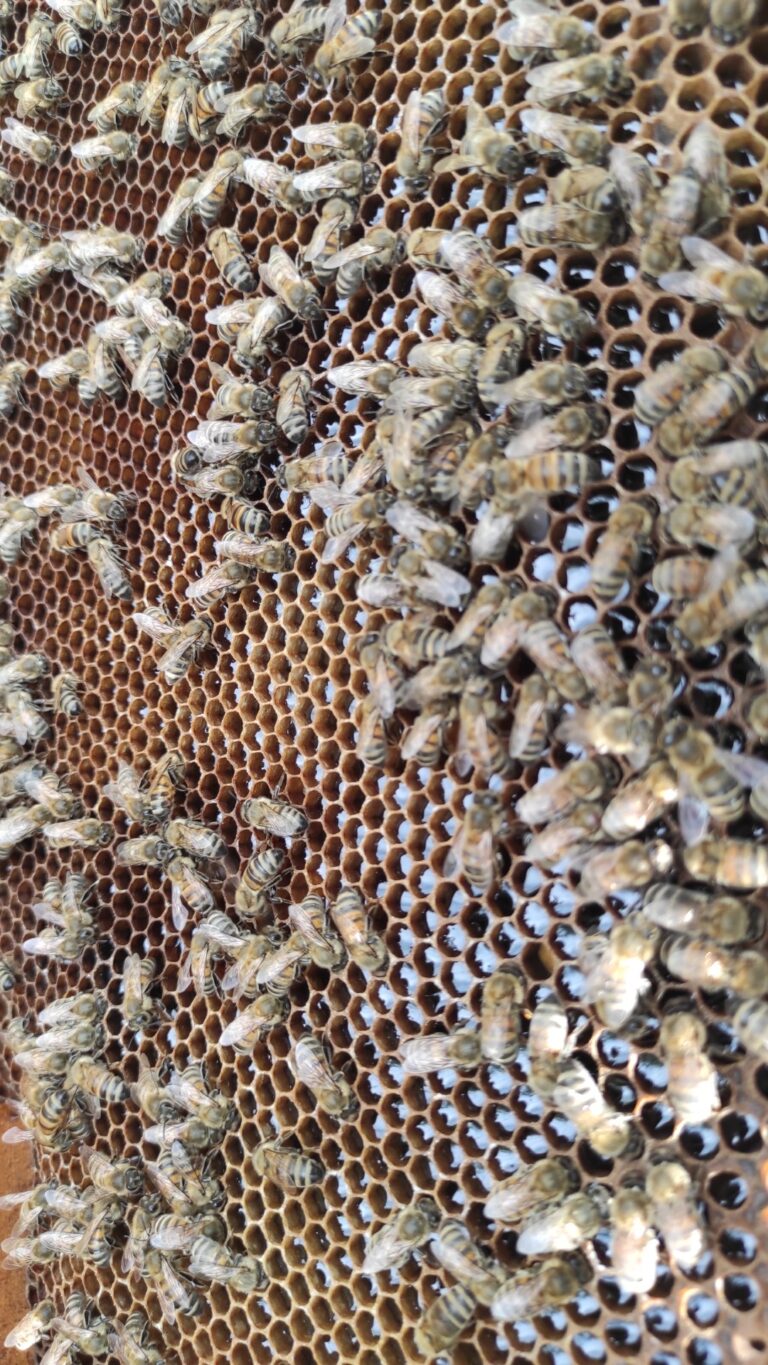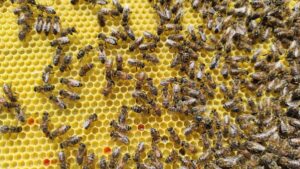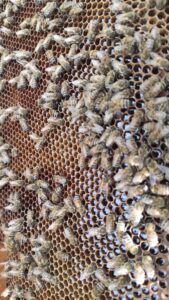As a beekeeper, few things are more disheartening than discovering your thriving colony has fallen victim to disease. Among the various ailments that can affect honeybees, sacbrood disease stands out as one of the most distinctive yet manageable viral infections. Understanding this condition is crucial for maintaining healthy hives and ensuring the long-term success of your beekeeping operation.
What is Sacbrood Disease?
Sacbrood disease is a viral infection that primarily affects honeybee larvae, causing them to die just before pupation. The disease gets its name from the characteristic “sac-like” appearance of infected larvae, which fail to shed their final larval skin and instead remain enclosed in a fluid-filled sac. This viral condition is caused by the Sacbrood virus (SBV), a single-stranded RNA virus belonging to the Iflaviridae family.
The virus specifically targets larvae that are 8-9 days old, just as they’re preparing to pupate into adult bees. What makes sacbrood particularly recognizable is that infected larvae maintain their overall shape and color initially, making early detection somewhat challenging for novice beekeepers.
Identifying Sacbrood: Signs and Symptoms
Visual Indicators
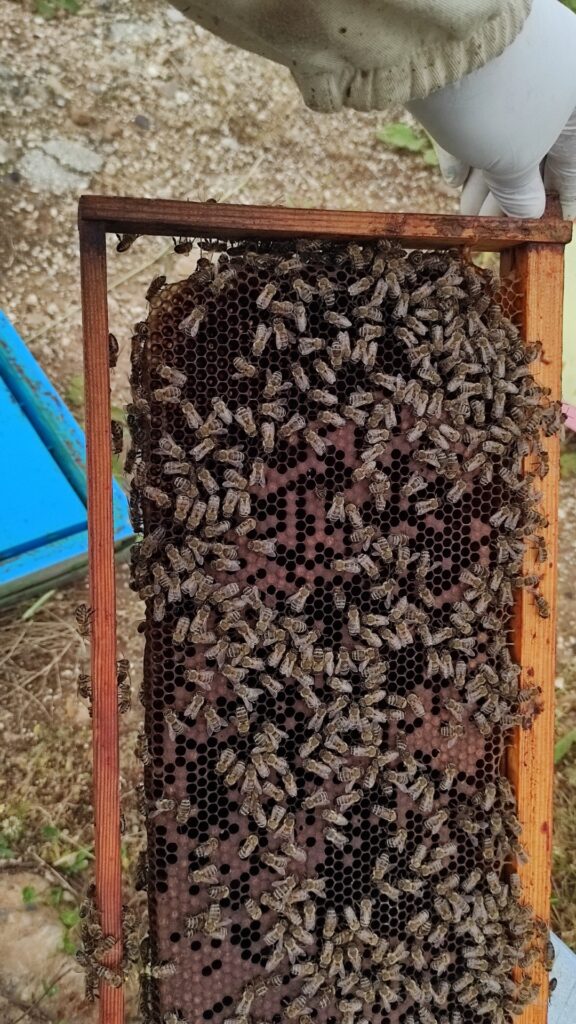
The most telling sign of sacbrood is the appearance of the affected larvae themselves. Healthy larvae should be pearly white, plump, and segmented. In contrast, sacbrood-infected larvae exhibit several distinctive characteristics:
Early Stage Symptoms:
- Larvae appear slightly discolored, taking on a pale yellow tint
- The larval skin becomes tough and leathery
- Larvae fail to pupate at the expected time
- Affected cells may have slightly sunken cappings
Advanced Stage Symptoms:
- Larvae turn dark brown or black
- The body becomes watery and sac-like
- A characteristic boat-like shape develops as the larva dries out
- The dried remains can be easily removed from cells as a single piece
- A slight odor may be present, though not as strong as with American foulbrood
Distribution Patterns
Sacbrood typically doesn’t affect the entire brood pattern uniformly. Instead, you’ll notice scattered infected cells throughout the brood area, creating a “spotty” or “peppered” appearance. This random distribution is quite different from other brood diseases that might show more concentrated patterns of infection.
Causes and Transmission
Primary Causes
Sacbrood virus spreads through several mechanisms within the hive:
Direct Contact: Nurse bees can transmit the virus while feeding infected larvae, spreading it to healthy brood through contaminated food glands.
Contaminated Equipment: The virus can persist on hive tools, frames, and other beekeeping equipment, making sanitation practices crucial.
Robbing Behavior: When bees rob honey from infected colonies, they can carry the virus back to their own hives.
Drone Congregation: Infected drones may spread the virus to other colonies during mating flights.
Contributing Factors
Several environmental and management factors can increase a colony’s susceptibility to sacbrood:
Stress Conditions:
- Overcrowding in the hive
- Poor ventilation
- Inadequate nutrition
- Extreme weather conditions
- Recent transportation or disturbance
Seasonal Patterns: Sacbrood typically becomes more prevalent during late spring and early summer when colonies are expanding rapidly. The increased brood production during this period can stress the colony’s resources and immune responses.
Queen Quality: Colonies with older or poorly mated queens may show increased susceptibility to sacbrood, as the queen’s pheromones play a role in colony immunity and overall health.
Impact on Colony Health
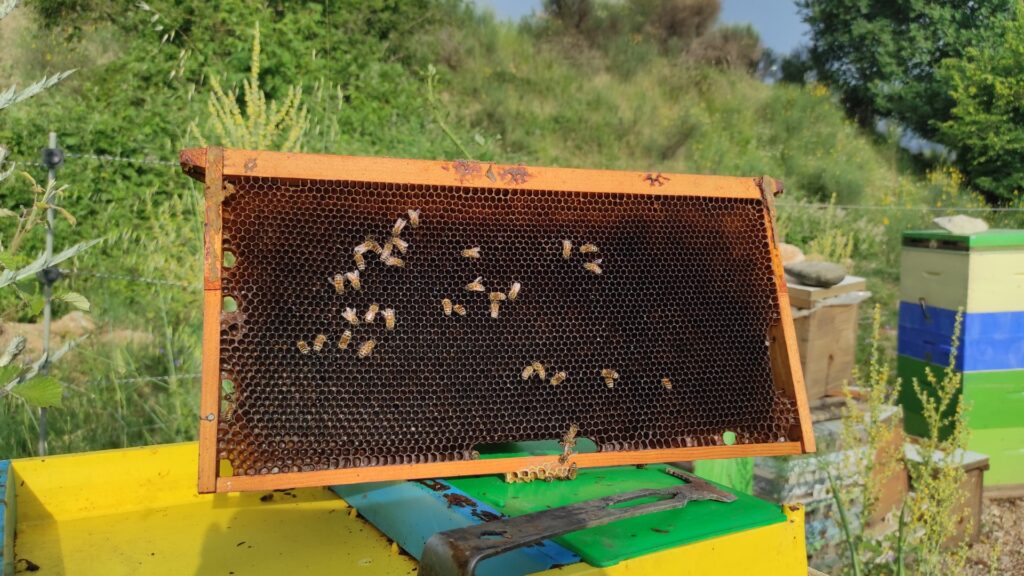
Short-term Effects
While sacbrood can be alarming to witness, it’s generally not as devastating as other brood diseases like American foulbrood. The immediate impacts include:
- Reduced brood survival rates
- Decreased adult bee population
- Potential reduction in honey production
- Increased stress on nurse bees
Long-term Consequences
In most cases, healthy colonies can recover from sacbrood infections without intervention. However, chronic infections or those occurring during critical periods can lead to:
- Weakened colony strength going into winter
- Reduced swarming potential
- Increased susceptibility to other diseases or pests
- In severe cases, colony collapse
The key difference between sacbrood and more serious diseases is that sacbrood rarely kills entire colonies. Instead, it acts more like a chronic condition that can weaken the colony over time if left unaddressed.
Treatment and Management Strategies
Natural Recovery
One of the most encouraging aspects of sacbrood is that many colonies can overcome the infection naturally. Strong colonies with good genetics and adequate resources often clear the virus on their own within 4-6 weeks. This natural recovery occurs when:
- The colony maintains strong hygiene behaviors
- Environmental stressors are minimized
- The colony has sufficient population to maintain proper brood care
Active Management Approaches
Queen Replacement: Replacing the queen is often the most effective long-term solution for persistent sacbrood infections. A new queen brings:
- Fresh genetics with potentially better disease resistance
- Renewed pheromone production
- A break in the brood cycle that can interrupt virus transmission
Improving Colony Conditions:
- Ensure adequate ventilation to prevent moisture buildup
- Provide sufficient space to prevent overcrowding
- Supplement feeding during nectar dearth periods
- Reduce disturbances during treatment periods
Enhanced Hygiene Practices:
- Remove and destroy severely affected frames
- Maintain clean hive tools and equipment
- Practice good apiary sanitation
- Avoid transferring equipment between infected and healthy colonies
What NOT to Do
Unlike bacterial diseases, sacbrood does not respond to antibiotic treatments. Using antibiotics inappropriately can actually harm beneficial bacteria in the hive and potentially worsen the situation. Additionally, there are no approved chemical treatments specifically for sacbrood virus.
Prevention Strategies
Genetic Selection
Breeding or purchasing bees from stock known for strong hygienic behavior can significantly reduce sacbrood incidence. Hygienic bees are more likely to:
- Detect and remove infected larvae quickly
- Maintain cleaner hive conditions
- Show better overall disease resistance
Management Practices
Regular Inspections: Conduct thorough brood inspections every 2-3 weeks during active season to catch infections early.
Maintain Strong Colonies: Strong colonies are naturally more resistant to sacbrood. This means:
- Ensuring adequate population levels
- Providing sufficient food stores
- Managing for good queen quality
- Controlling other pests and diseases
Environmental Management:
- Choose apiary locations with good air circulation
- Provide adequate shade during hot weather
- Ensure access to clean water sources
- Maintain proper hive spacing
Quarantine Protocols
When introducing new bees or equipment:
- Quarantine new colonies for observation period
- Inspect purchased equipment thoroughly
- Avoid mixing frames from different sources initially
- Monitor new additions closely for first few weeks
When to Seek Professional Help
While many beekeepers can manage sacbrood independently, certain situations warrant professional consultation:
Persistent Infections: If sacbrood persists for more than 8-10 weeks despite management efforts, consider consulting a local bee inspector or experienced beekeeper.
Severe Infestations: When more than 30% of brood cells show signs of infection, professional guidance can help prevent colony loss.
Uncertain Diagnosis: Sacbrood can sometimes be confused with other brood diseases. If you’re unsure about the diagnosis, have samples examined by a qualified apiary inspector or veterinarian.
Multiple Colony Infections: If several colonies in your apiary show signs of sacbrood simultaneously, this may indicate a more serious underlying issue requiring professional assessment.
Economic Considerations
Direct Costs
Sacbrood can impact your beekeeping operation economically through:
- Reduced honey production (typically 10-25% in affected colonies)
- Cost of queen replacement ($25-50 per queen)
- Potential loss of breeding stock
- Time investment in increased monitoring and management
Indirect Benefits
Interestingly, colonies that successfully overcome sacbrood often show improved disease resistance and hygiene behaviors, potentially reducing future health issues.
Insurance and Record Keeping
Maintain detailed records of sacbrood occurrences, treatments, and outcomes. This documentation can be valuable for:
- Insurance claims in severe cases
- Tracking genetic lines for breeding decisions
- Identifying environmental or management factors
- Contributing to research efforts
Regional Variations and Climate Factors
Sacbrood prevalence can vary significantly based on geographic location and climate conditions:
Temperate Regions: Peak occurrence typically in late spring/early summer when rapid brood expansion coincides with variable weather conditions.
Humid Climates: Higher humidity can increase sacbrood incidence, making ventilation management especially critical.
Arid Regions: While generally less common in dry climates, stress from extreme heat can increase susceptibility.
Research and Future Developments
Current research into sacbrood focuses on several promising areas:
Genetic Resistance: Scientists are identifying specific genetic markers associated with sacbrood resistance, potentially leading to improved breeding programs.
Probiotic Treatments: Research into beneficial bacteria that might help colonies resist viral infections shows early promise.
Environmental Factors: Studies examining the relationship between climate change, environmental stressors, and viral disease prevalence are ongoing.
Diagnostic Tools: Development of rapid field tests for sacbrood virus could help beekeepers make more informed management decisions.
Conclusion
Sacbrood disease, while concerning when first encountered, represents a manageable challenge for informed beekeepers. Unlike more devastating diseases such as American foulbrood, sacbrood rarely results in colony death and often resolves naturally in strong, well-managed hives.
The key to successful sacbrood management lies in early detection, proper diagnosis, and appropriate response. By maintaining strong colonies, practicing good hygiene, and understanding when to intervene versus when to allow natural recovery, beekeepers can minimize the impact of this viral infection on their operations.
Remember that sacbrood is part of the natural challenges that come with beekeeping. Rather than viewing it as a failure, consider it an opportunity to improve your management practices and deepen your understanding of bee biology. Strong colonies that overcome sacbrood often emerge more resilient and better equipped to handle future challenges.
As our understanding of bee viruses continues to evolve, staying informed through continued education, networking with other beekeepers, and working with local extension services will help ensure the long-term health and productivity of your colonies. The investment in knowledge and proactive management pays dividends in stronger, more productive hives that can weather the various challenges that come with keeping these remarkable insects.
Meta Tags
- honeybee sacbrood disease viral infection brood larvae
- beekeeping sacbrood virus treatment prevention management
- bee colony health larval disease diagnosis symptoms
- apiary management sacbrood virus honeybee pathology
- bee disease identification sacbrood prevention beekeeping practices
